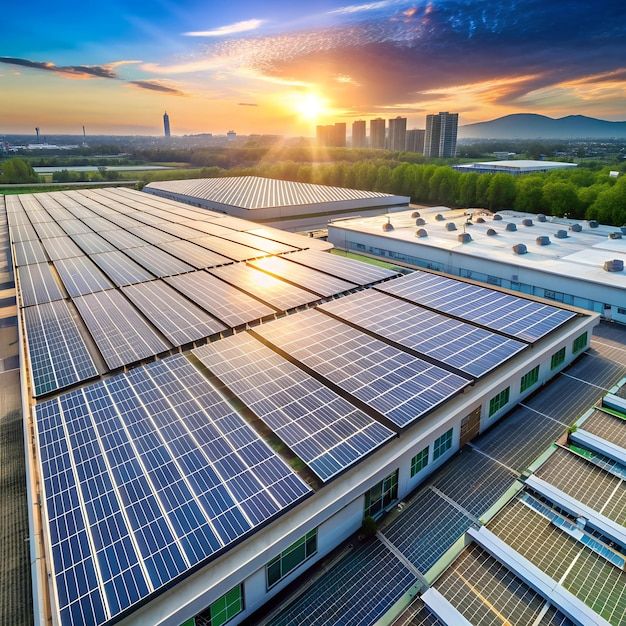When people think of solar energy, they often picture photovoltaic (PV) panels generating electricity from sunlight. However, solar power goes far beyond electrical production. Thermal solar installations, also known as solar thermal systems, harness the sun’s heat directly—providing hot water, space heating, and even industrial process heat. This often-overlooked branch of solar technology offers one of the most efficient and sustainable ways to meet heating demands without fossil fuels.
This article explores how thermal solar systems work, the various types of Commercial solar Leicester installations available, and the wide-ranging benefits they offer to homes, businesses, and large-scale facilities.
What Is Solar Thermal Energy?
Solar thermal energy is the process of capturing the sun’s radiant heat and converting it into usable thermal energy. Instead of producing electricity like photovoltaic panels, solar thermal systems use collectors—devices designed to absorb sunlight and transfer the heat to a working fluid (such as water, antifreeze, or air).
This heat can then be used directly for domestic hot water, space heating, pool heating, or even industrial applications like drying, sterilization, and desalination.
Solar thermal installations can operate independently or be integrated into existing heating systems to reduce energy consumption and utility costs.
How Thermal Solar Systems Work
Although configurations vary, most thermal solar systems share the same basic components:
-
Solar Collectors: These panels absorb sunlight and convert it into heat.
-
Heat Transfer Fluid: Circulates through the collectors to capture and move the thermal energy.
-
Heat Exchanger: Transfers the collected heat from the fluid to water or air used in your home or facility.
-
Storage Tank: Holds heated water for later use, ensuring hot water availability even when the sun isn’t shining.
-
Backup Heater (Optional): Supplements the system during cloudy days or periods of high demand.
The beauty of solar thermal systems lies in their simplicity—they convert sunlight directly into heat without the intermediate step of generating electricity, making them highly efficient at energy conversion.
Types of Solar Thermal Installations
The right type of system depends on climate, application, and energy requirements. Here are the most common designs:
1. Flat-Plate Collectors
The most common and affordable option for residential systems, flat-plate collectors consist of a dark absorber plate under glass. They’re ideal for domestic water heating and space heating in moderate climates.
2. Evacuated Tube Collectors
These advanced systems feature rows of glass tubes with vacuum insulation, allowing them to maintain efficiency even in cold or overcast conditions. They’re suitable for regions with harsh winters or industrial-scale applications.
3. Unglazed Collectors
Typically made of polymer materials, unglazed collectors are used for swimming pool heating. They are cost-effective and perform well in warmer climates where temperatures rarely drop below freezing.
4. Concentrated Solar Thermal (CST) Systems
For large-scale or industrial use, CST systems employ mirrors or lenses to focus sunlight onto a receiver, generating extremely high temperatures. These installations can power steam turbines, desalination plants, or industrial furnaces—going far beyond home heating applications.
Residential Applications
For homeowners, solar thermal installations provide a practical and cost-saving way to reduce dependence on gas or electric water heaters. A well-designed residential system can cover 60–80% of annual hot water needs, significantly cutting utility costs.
Some systems also connect with underfloor or radiator-based heating, providing sustainable space heating during colder months. When combined with energy storage and smart controls, solar thermal energy can operate seamlessly alongside traditional HVAC systems.
Commercial and Industrial Applications
In commercial and industrial settings, thermal solar installations can play an even larger role. Many businesses require substantial amounts of heat for daily operations—laundromats, hotels, hospitals, and food processing plants, for example.
By using solar thermal systems to preheat water or air, these facilities reduce both operational costs and carbon emissions. Industrial-scale systems can even reach temperatures above 400°C, suitable for power generation or manufacturing processes.
Advantages of Solar Thermal Installation
-
Higher Efficiency Than PV Systems
Solar thermal collectors convert up to 70% of sunlight into usable heat, while PV panels typically convert only about 20% into electricity. -
Lower Operating Costs
Once installed, the system uses free solar energy and requires minimal maintenance. The long lifespan—often exceeding 20 years—ensures a strong return on investment. -
Energy Independence
With solar thermal, you’re less reliant on gas or electricity for heating. This stability is especially valuable during energy price fluctuations. -
Reduced Carbon Footprint
Every kilowatt-hour of heat generated by solar thermal energy replaces fossil fuels, cutting emissions significantly. -
Scalability and Flexibility
Solar thermal systems can be sized to fit any property, from a small home to a large industrial complex. They also integrate well with heat pumps or hybrid systems.
